Arthell Isom: The Man Behind Japan's First Black-Owned Anime Studio—D'Art Shtajio
As we wrap up Black History Month, we’re pleased to feature the history making artist and entrepreneur behind D’Art Shtajio: Arthell Isom.
Let’s walk through his creative journey, from childhood to becoming Japan’s first black anime studio owner.

Recent Posts
Start Your Creative Journey Creativity School!
Kickstart your child’s creative journey and enhance their artistic potential! Our award-winning artists teach LIVE art classes at Creativity School.
Artist Spotlight: Arthell Isom
Twin brothers, Arthell and Darnell Isom, are among the most influential African Americans in Japan, with the first black-owned anime studio, D’ART Shtajio.
It was created in 2016, after teaming up with animator Henry Thurlow, and since then has produced American influenced Japanese anime and produced stand alone works, along with creations for The Weeknd, Attack on Titan, Indigo Ignited and many others..

In a visit with Creativity School’s educational director, Hydi Hoeger, Arthell talked about his creative journey from childhood to becoming the person that he is now. Discussions ranged from his childhood, artistic influences, Ghost in the Shell, to so much more!
Arthell’s Childhood
Even at a young age, Arthell has always been fond of art; a passion he shared with his twin brother, Darnell.
Arthell Isom: I’ve been drawing since I was like 2 years old. I grew up in a poor household in a poor community.
“Art was kind of an escape.“
Arthell Isom: But it wasn’t like something that I only did just because there was nothing else to do, but it really was finding your ways. And I think it was accessible to us, right? Like there was paper, there’s always paper.
Hydi Hoeger: Yeah, no pen and paper. I know that’s something when we talk about with school budgets and stuff. Especially with everything that’s going on in the world now, budgets are being cut, but drawing requires very little and… it is the foundation of all art.
“Playing is the first discovery of creativity and then drawing is the next.”
Arthell Isom:Yeah. Yeah, it’s the foundation of all art and I feel like for children, besides playing, it’s like the first discovery of creativity. Playing is the first discovery of creativity and then drawing is the next. It really does allow children to explore their imagination and to kind of just build worlds, right? I think besides building worlds, it opens up another part of the brain that helps us to just figure out who we are.
Twins and Best Friends
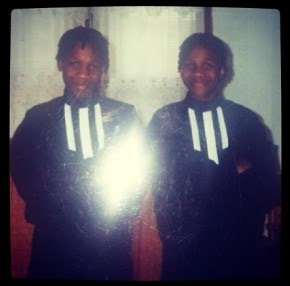
Clearly happy memories, Arthell shared with Hydi bits of his childhood with Darnell, his twin brother, and how important their bond was in shaping their future.
“All siblings have sibling rivalry and ours was kind of in the creative space.”
Arthell Isom: So, when I was younger, my brother and I, that was just our thing. After we finished playing outside or something we would come sit down and draw. Draw characters and draw like, you know, creatures and things. We’d make up stories. After we made up the stories for our characters, we’d go outside and make believe that we were those characters. We just kind of expanded on it.
Arthell Isom: My brother and I, we had pretty much all the same interests and we still do, even now. I think my brother and I, we always imagine a future together.
Hydi Hoeger: That's just such a special bond, you know, that you can plan your futures together and grow. Do you think that helped you? You know that people face so many obstacles when they're growing into their creative selves.
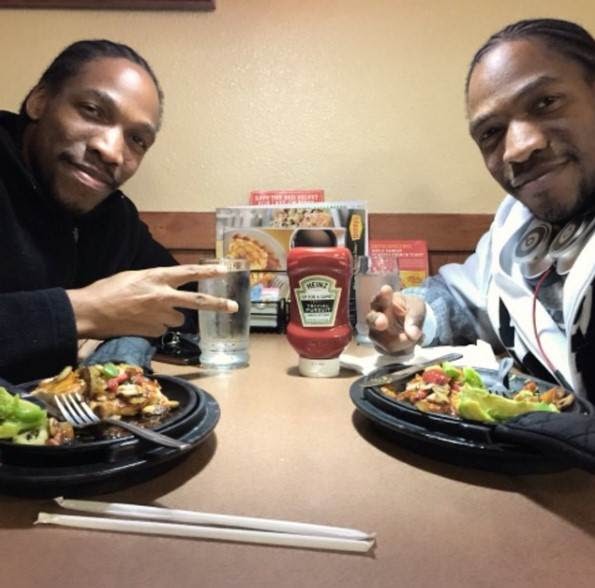
Arthell Isom: I think it does it help. Even now, we still do rely on each other creatively and also just for motivation. You know, of course, all siblings have sibling rivalries. Our rivalry was kind of in the creative space, you know where, if he was drawing something, I wanted to draw, too. If he was excelling in music, I’m going to excel. It wasn’t excelling that would crush his creativity, but was like a motivation for us to make sure we were good at what we did.
Hydi Hoeger: Your other half in almost every way. But you’re not on the same exact path? You’re not doing the exact same kind of animation. He even went to a different art school?
Arthell Isom: Yeah. We always chose a different part of whatever subject we were studying. We always felt that if we studied within the same field, we should study the opposite of it. Then we can bring those things together, have more control of that and have a wider view of what we need to do.
Music and Creativity
Arthell attended Rosa L. Parks School of Fine and Performing Arts, a public high school dedicated to music, drama, painting, and other arts. He spent 4 years studying music and the saxophone.
“Music helps you touch creativity in a different way and experience it in a different way.”
Arthell Isom: You know, if you watch a movie and you're supposed to feel excited about something, you get music with a higher tempo. Or, you know, if you want to be sad — like minor chords, melancholy music or something.

Arthell Isom: When I listen to music, because I have an understanding of music theory, I can apply that and I can draw from it. When I am thinking about productions, or crafts, or just ideas, I want to feel a certain way to help me to get inspiration.
“Emotion is the base of art.”
Hydi Hoeger: Music has that practical side but also this really emotional side you know, like you were saying– minor chords to produce sad or negative feelings It’s the same with art, drawing and painting, things like that. There’s so many different psychological things and tools that we use.
Arthell Isom: Yes, and color is the easiest way for us to experience emotion. There’s also composition, how claustrophobic the image feels, right? Like, how many objects you have in place that we can use lines. Shapes also force us to feel a certain kind of way.
Hydi Hoeger: Yeah. It’s a visual language. It’s a way of expressing yourself.
A Family Who Works Together
Arthell talked a little bit about his mom and his dad. His mom was a writer. His dad was like a sound engineer. He produced music and onstage sounds. He was also in a band, practiced carpentry, and did construction.
Arthell Isom: He was really into ownership and doing our own thing and working for ourselves. My dad, like, never worked for anyone. Every job he had, he created for himself. He really was like a jack of all trades. He also drew, so I think a lot of our creative side probably does come from my dad. My mom was a writer.
Arthell Isom: It was kind of cool because my dad had a lot of construction tools and things you wouldn’t see in normal peoples homes. We weren't really allowed to be kids so that was a difficult thing because we were really just always with adults just working on building a house. But even when I was younger I also still felt that what we're doing was still towards something positive, and like you know because, like you know just kind of looking at the outside hustlers and drug dealers and things that I knew I didn't want to do.
Overcoming Obstacles
Arthell openly shared some of his obstacles growing up and how he challenged himself to break through.
Arthell Isom: It’s how people perceive you. We grew up in a rough neighborhood and everyone’s listening to hip hop or wants to be in gangs or like the outside world. But, we were really just into drawings and ourselves. Of course, you get picked on for things like that.
Arthell Isom: And then there’s that conflict that I think everyone kind of experiences. Like, how do you fit in but still be yourself. And then you have these really large dreams, but how do you achieve those things?
“But even when I was younger, I also still felt that what we were doing was still towards something positive”
Academy of Art University
Arthell Isom: We always knew we wanted to be artists and we always knew that we wanted to do film and animation. I think everything that we did, it was always planning for that. Then, once, in my last year of high school, I had watched Ghost in the Shell. And, then from there, we realized it was like the other world of art that we weren’t aware of. Now that really interested me.
Hydi Hoeger: So, you decided to go to college in California. You were apart from your twin brother and that had never happened before. What was that experience like for you?
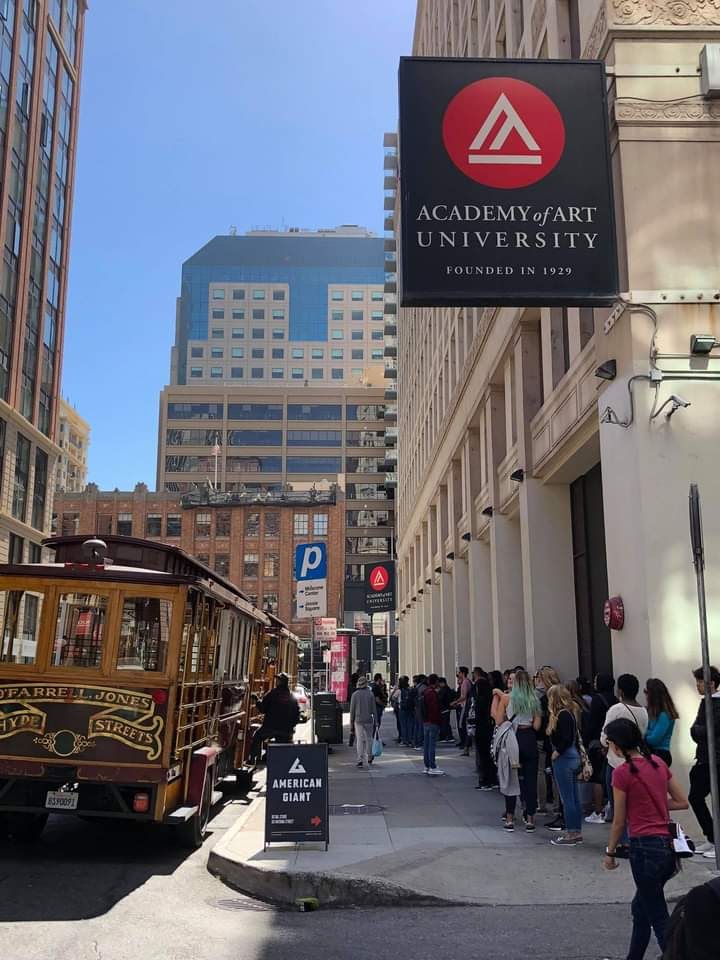
Arthell Isom: It was interesting because that was the first time being separated from my brother and that had a bigger effect on me than being separated from [my family]. Even now, I always call my brother. Everything was such a new experience. I did not know what to expect. I didn't know what to expect from art school and so because I didn't know what to expect from my art college. I think we were like the first people to go to college. My dad dropped out of elementary school and my mom, she graduated from high school. So, you know, I guess I was just like, “ Okay, I'm gonna go to college and whatever it is, I just gotta make sure I graduate. I was just really happy to even have the opportunity to go to college.
Arthell Isom: Everything was really difficult and I got a lot of bad grades because I was trying to figure out what I wanted to know and learn. I had brought one movie with me which was Ghost in the Shell and I really liked Ghost in the Shell and I didn’t know— the academy is a very traditional art school. Background painting and concept art weren’t really a thing at that time. I really liked character design classes and things like that…but I knew that wasn’t what I wanted to do. I didn’t know what it was I wanted to do, but I think something was drawing me to do background and so I was trying to make sense, like with the curriculum, but the curriculum wasn’t made for that. Then the art director changed. She was really amazing and really just kind of understood what I was trying to do. She helped me make it make sense so I could still graduate.
Arthell Isom: I feel like, if I had expectations, my college definitely exceeded all of them.
Ghost in the Shell, Yoyogi, and Hiromasa Ogura
Arthell’s discovery of Ghost in the Shell was a turning point in his creative journey. Constantly pulled by the background work of Hiromasa Ogura, Arthell found his creative passion. Through hard work and perseverance, Arthell was eventually able to work alongside and be mentored by Ogura for several years.
Arthell Isom: Ghost in the Shell is one of the first anime I’d ever seen and that was the one tape that I brought with me to college, so yeah, something about it really stuck with me. I think most people are attracted to the characters and the character stories and things like that, but I didn't really care so much about that, but I really liked the background.

Arthell Isom: So, I reached out to production at Yoyogi to know what I need to study, and they actually responded back with a list of things that I need to study to be a good background artist.
Hydi Hoeger: The day after you graduated you hopped on a plane and flew to Japan.
Arthell Isom: Yeah, that’s true.
Hydi Hoeger: Like, like next day. And you know so much Japanese [at that point], I’m sure.
Arthell Isom: [laughing] I wish. It would have been good if I did. Because I knew that I wanted to move to Japan, I did take a class at the city college while I was going through the academy. It was like a night class. It’s impossible to learn Japanese in one semester. I guess it was like 3 months of Japanese but I just learned a few things. I learned the alphabet and, you know, how to say hi and stuff like that.
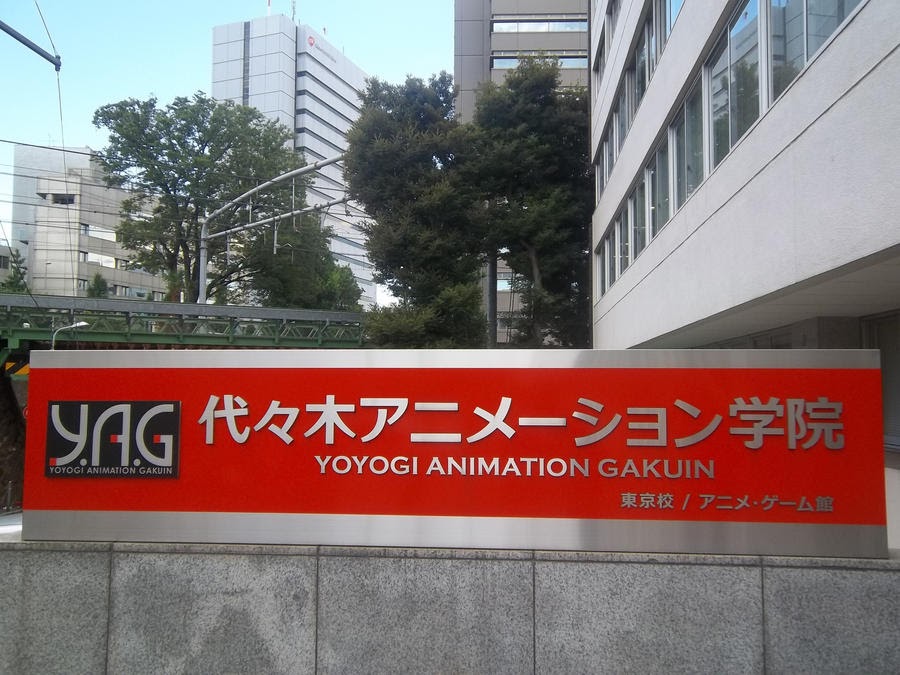
Arthell Isom: I applied to go to school first and then they said no. I just moved out here and I didn’t really have a plan, couldn’t really understand the whole visa process or anything so I just moved out there. Then [Yoyogi] school had an open house and I went to the open house and they were just kind of surprised. I was actually the first foreigner there and they were just kind of like, “Oh, what are you doing here?” But they were happy. They were like, “Wow, that’s cool that you came all this way.” They remembered that I would call their school so they remembered me but, yeah, they were like “Oh, we don’t accept foreigners, so you can’t come to school.”
Hydi Hoeger: But your persistence paid off.
Arthell Isom: Yeah, yeah. They allowed me to come back a year later. The school is all Japanese, there’s no English, right? So, I practiced Japanese; both reading and writing. Then I also had to figure out how to get a visa. When I went back I was just kind of like, “Okay, I studied Japanese and I got a visa and I’m ready to go to school.” They were like, “You know, you’re pretty persistent and it seems like you’re really dedicated and motivated so, as long as you promise to study really hard, you can come to school.”
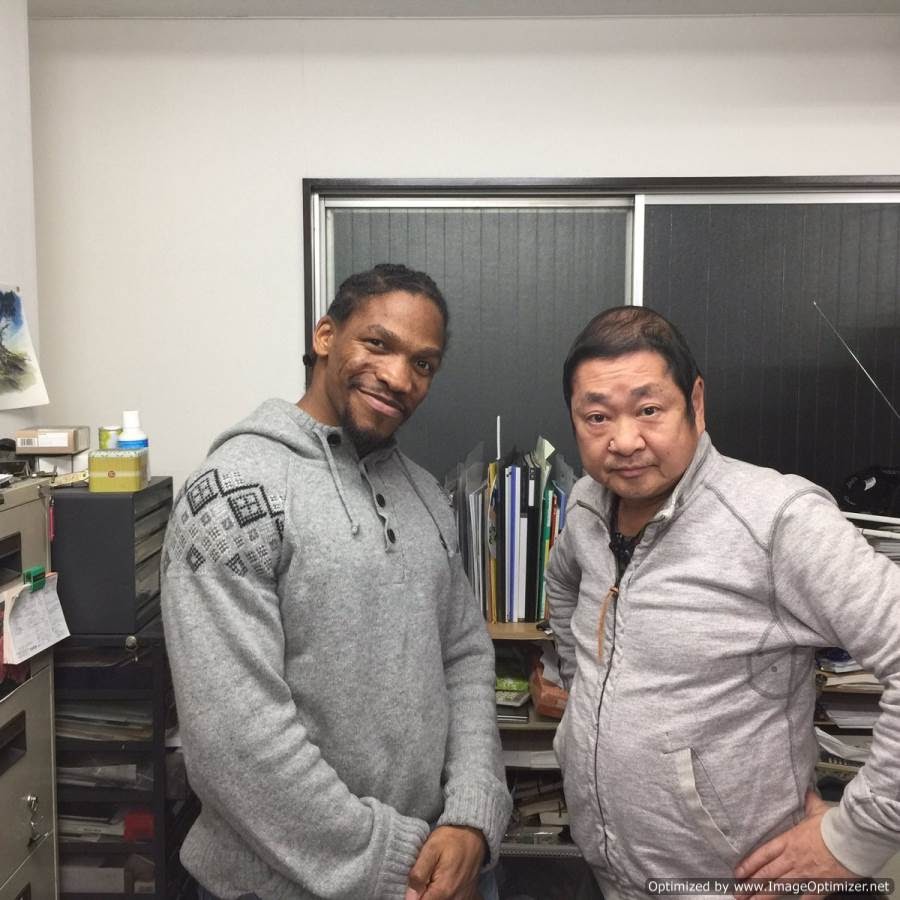
Arthell Isom: While I was in school I applied to Ogura Kobo. I got the job at the first one I said I wanted to work for. He [Hiromasa Ogura] is one of the original major background artists. His style is very real, very dark and moody. All of them have a very distinct feel.
Hydi Hoeger: It was him and his backgrounds almost specifically that you were drawn to, right? That really sparked your interest and set you on your path.
Arthell Isom: Yeah. I thought Ghost in the Shell was so beautiful. I would just kind of watch that animation without audio or anything- just starting at it.
Hydi Hoeger: So when you first saw Ghost in the Shell, would you ever have imagined that you would be able to work alongside him? Or, was that like a goal?
Arthell Isom: When I was in high school that wasn’t a goal. But, once I got to college that was my goal. So, when I got to work alongside him, I was really excited. I guess, at the moment I probably should have been more excited but I was always in the moment. I guess I wasn’t so focused on the idea that I was working for him. Now I was like, “Shoot, I gotta keep this job!”
“You know, you’re pretty persistent and it seems like you’re really dedicated and motivated…”
Arthell Isom: At Kobo they only hired one person a year and everyone was just at such a high level. It was really hard.I was just like, “Oh man. Everyone is so good.” I remember thinking that every day. I would always go to my senpai’s desk and just look at what they were drawing and ask them questions and try to look at their work.
Arthell Isom: At that time, they were still painting on paper. That was another reason why I wanted to work in Japan. We got to still paint the backgrounds of paper, so all of the backgrounds are just sitting on the shelves. I could go and just take from any animation, even Ghost in the Shell. I didn’t get to see Ghost in the Shell the first year, but I think it was like my second year, then I got to see the actual backgrounds and it was really cool. It got the same experience when looking at the background from Ghost in the Shell that I got when I went to Italy and I got to see Caravaggio’s paintings. It was such a different experience [seeing it in person] and even still…now I feel that way.
D’ART Shtajio

Arthell then shared the time when he and his twin brother, Darnell, decided to create their own studio; D'Art Shtajio.
Hydi Hoeger: I love the play on words [D’ART Shtajio]! So, would you explain it? I just really feel like so many people want to be that great person, but they don't put in the work that is required. They don't get through the hard things and I think your studio name is perfect.
Arthell Isom: The name of our company is so difficult, right? Like, no one could say it [laughing]. So, it’s a play on words. The first meaning, it really does just simply mean, the arts studio. But the shtajio part of it is a Japanese play on words. The Japanese people are also surprised too, because sutajio in Japanese just means studio, but they have three alphabets. And what we actually use for our “shtajio” is the kanji shtaji. It’s a word I learned when I was painting backgrounds here.
“Shtaji+Sutajio = Shtajio”
Arthell Isom: Shtaji and background painting means the underpainting – it’s the base of the painting. And, it’s the most important aspect when you start a painting. You have to get all the colors in there and things correct at that first stage because you know, it's paper. And so, it decides everything, and I really liked that. So, the shtajio in our studio’s name means the foundation of arts. And the saying in our company, Shtaji ga daiji, means that Foundation is Important”.
Arthell’s Words of Inspiration
Even with Arthell’s rising success in the world of animation, he never forgets about his humble beginnings and always keeps his feet on the ground.
Hydi Hoeger: What are you the most proud of out of what you’ve done?
Arthell Isom: I'm not really proud of too much. Like, I've never focused on the things that I did. I only focus on what it is that I'm trying to achieve next. But… if I had to choose something that I'm most proud of it is to be able to help other people achieve their dreams. And with my company, that's always been something – that we always wanted to be able to give people jobs… and be able to work in animation without any discrimination.
Hydi Hoeger: You should be proud of that. I think that also speaks to who you are – a caring person who wants to make a positive difference. Now, what would you tell yourself as a little kid? Um, you know, looking back on everything, what advice would you give to yourself or other students?
“The baby steps are important, not the big steps”
Arthell Isom: That is how I think about life and the fundamentals. It's the most important thing. Just learning the things that's required so that you can do what you want to do next. Even though practicing sucks it's so important and so try to suck it up [laughing].
“Don’t be upset with the process, and be happy with the progress”
Arthell Isom: Yeah, don't be angry at the process because it's so important. And even though you can't see [what lies ahead], just be happy with the progress.
Hydi Hoeger: I think some of the big takeaways from you is you dream big, and then you don't just dream it. Like, you do all the hard work to get to that dream. You are pushing through everything. You're optimistic. You have a great mindset; you were saying that it's not that you didn't belong at the studio, you wanted to belong. So those little things that you tell yourself, I think that's how you've really gotten so far.
Arthell Isom: Yeah, and there’s this quote that I really like. And, I think my life is based on this quote:
“A dream without a plan is just a wish.”
Arthell Isom: I really like that quote and I think that's just how I live because I feel that there's a process to achieve everything. If you know what you want, you just have to make a plan to do it. And so that's kind of how I go through life. Like, okay, I want to go to Japan. What are the steps that's required to come out here? I want to work here. What are the steps required to do that? And yeah, I think for everyone, dreams are super important.
“Once you know what your dream is, you just have to figure out the process to make it real.”
Hydi Hoeger: And having a little support along the way, it doesn’t hurt.
Arthell Isom: Yeah, like friends and networks and [of course], family. But I also think a lot of people focus on like the haters. Don’t focus on that.
“Focus on the people who believe in what you believe in.”
Arthell Isom: No one's going to believe in your dream, like, a 100%, right? It's your dream. Even if they only believe in it 10%, like that 10% is positive energy. So I always, I kind of want to just focus on the positive energy, right?
“Even in the negative messaging, there’s still positive information. Learn to filter it out.”
Arthell Isom: So if everyone's like, “Oh man, that's so difficult. Do you know how much studying you're gonna need to make that happen?” Just focus on the, “…how much study you’re gonna need to make that happen”, because that little tidbit of information is them telling you how to make it, you know? Learn to filter it out.
The Wrap Up
Arthell is living his dreams of working with Hiromasa Ogura and doing what he loves: creative background and concept art.
Hydi Hoeger: You are going to influence somebody and they’re going to look at you. I know that you’re very humble, but you’re inspiring this new generation of people. You made anime, okay. I know that you have friends from academy that are like – this is my friend, Arthell. He does anime. And he's an artist.
Arthell Isom: Yeah, yeah. That is true. When we were in high school, no one really looked at anime as an art form. I'm always showing people like the artists who work at our company and a few others, traditional art is very important to us.
Hydi Hoeger: I do hope that you do realize though, and I know you are humble, but that you have blazed trails for people in so many ways. I know that you're really going to change a few lives along the way.
Arthell Isom: Thank you! And I am appreciative of all the people who support me.
Hydi Hoeger: I think you're going to have people look up to you just like, you know, you looked up to a few others.
Arthell Isom: Nah, they should look at [Hiromasa] Ogura-san [laughing]. Look up to my senpai, look past me [smiling].
Hydi Hoeger: Oh, but he didn't bring you out of a rough neighborhood to Japan. You did that yourself, well, you know, with a lot of help and support along the way.
Hydi Hoeger: I just admire what you've done so much and I know it's just life to you and it's just what you love to do, but to the rest of us, we're cheering you on and we're really proud of you. All right, thank you so much, Arthell,for taking this time out of your really busy day. I know that you are working late and long and hard, and I appreciate you giving us so much of it. Good luck with all of your projects. I know you're working on a really big one right now, so good luck with it and we'll be looking for it and rooting for you, cheering you on.
Arthell Isom: Yeah, that'd be great once you guys can see it. I'm excited.
Watch more of Arthell and Hydi's visit here:
Creative Kids Live
- Celina G.
On Demand Class
—Miao
